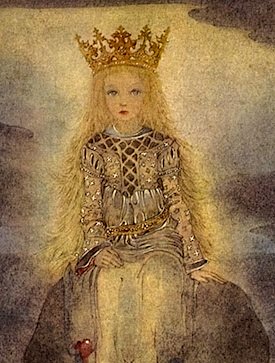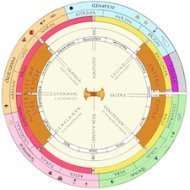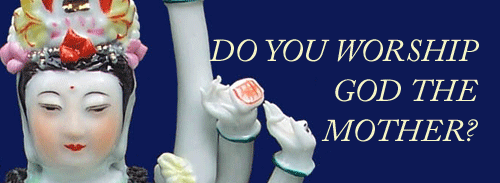Hail to the Princess!

Hail to the Princess is probably the best known Filianic Nativity Carol. It has been called the Filianic equivalent of Adeste Fidelis for its popular "centrality" to the celebration of Nativity.
We are very happy to present here a recording of the song, so that you will know the tune and may sing it in your own dear home.
You can load down the recording here. Or use the player below to play it right on the page.
The words of the carol are as follows:
Hail to the Princess
(Chorus)
Hail to the light of the glorious morning!
Hail to the first gentle rays of the dawn!
Hail to the star that has guided us onward!
Hail to the Princess
Hail to the Princess
Hail to the Princess of light that is born!Deep in the dark night of death we have fallen,
Far from the Mother from Whom we have turned.
Still in the darkness a clear voice is calling
Back to the Homeland
Back to the Homeland
Back to the Homeland for which we have yearned.(Chorus)
Over the valley the starlight is streaming,
Over the mountains and over the sea:
Waking the world from its slumberous dreaming
Bearing the glory
Bearing the glory
Bearing the glory of God's mystery.(Chorus)
White as the snow are the Angels descending,
Bright as the Sun are their banners unfurled,
Through the earth's darkness their voices are rending:
Echoing clearly
Echoing clearly
Echoing clear to the ends of the world.Hail to the light of the glorious morning!
Hail to the first gentle rays of the dawn!
Hail to the star that has guided us onward!
Hail to the Princess
Hail to the Princess
Hail to the Princess of light that is born!
Thealogy and Symbolism
The thealogy and symbolism of this carol is very straightforward and states in simple terms many of the essentials of the Filianist creed.
Most obviously the hymn is about Light and Darkness. It continually contrasts the darkness of separation from Dea with Her saving Light that is dawning upon the world.
Maid has turned away from Dea "in the infirmity of her sovereign will", as the Filianic Creed puts it. This is expressed in the lines:
Deep in the dark night of death we have fallen,
Far from the Mother from Whom we have turned.
Nevertheless, through Her conception of Herself and Her birth as Her Own Daughter, Our Mother God calls us back to Her:
Still in the darkness a clear voice is calling...
Back to the Homeland for which we have yearned.
Sound (as we noted in our description of bells on the Nativity Fir or Christmas tree) is metaphysically equivalent to light, and in the next verse, the Divine Voice becomes a Light:
Over the valley the starlight is streaming,
Lighting the entire world:
Over the mountains and over the sea:
The theme of Light and Darkness is shown as equivalent to Life and Death, and also to Waking and Sleep:
Waking the world from its slumberous dreaming
The idea of the material world as a dream and the Reality of the Spirit as wakefulness is perhaps most familiar from Hinduism and Buddhism. The Buddha, being En-light-ened, or at One with Ultimate Reality, is called The Awakened.
Here the concept is placed in a more explicitly Theistic context than that of Theravada Buddhism, but it is a Universal Truth, always and everywhere the same.
The final verse recapitulates the themes of Light, dark and Sound (or Voice):
White as the snow are the Angels descending,
Bright as the Sun are their banners unfurled,
Through the earth's darkness their voices are rending:
The Angels, or Janyati, not only come to celebrate the birth of the Daughter, but it is through Her birth that their presence in "earth's darkness" is made possible; for the Mediating Act of God the Daughter, which is Nativity, enables every other mediation between Heaven and earth; between Dea and maid.
In this most glorious of Carols, we hail the Divine Daughter – the coming-to-Her-children of Our Mother God – as our adored Saviour and our True Princess.
See also:
The Meaning of Nativity: The Great Winter Festival of Our Mother God
The History of the Christmas Tree
Winter Solstice Celebrations: The Northern Point of the Year's Journey
The Gates of Heaven: The mystical meaning of the Summer and Winter Solstices
The Star Fairy: The "Angel" of the Nativity Fir-Tree
Please support the Chapel of Our Mother God
Send Questions or Comments on Hail to the Princess
Chapel of Our Mother God Homepage
All written material at the Chapel of Our Mother God is copyright. Should you wish to reproduce any portion please contact us for permission.
Facebook or Twitter
Wheel of the Year
Articles on the Months, Seasons and Festivals of the year in feminine religion General The High Feast of EastreThe End/Beginning of the Cycle
- All about Eastre: The Last Festival and the First
- An Easter Hymn
- The Marianna Maria Chant
- The True Meaning of the Eastre Egg
- Chelanya: The Feast of Regeneration
- Cuivanya: The Feast of Divine Life
- Tamala: The Feast of the Dead
- All about Nativity
- The Birth of God the Daughter
- Winter Solstice
- The True Meaning of Christmas
- Amaterasu Omikami and the Spiritual Meaning of Midwinter
- The "Christmas Tree"
- The real Christmas Tree Angel
- "Hail to the Princess" carol
- The Day of Our Sovereign Lady
- Maia's Day
- The Day of Werde
- Early Winter Festivals
- The Conception of God the Daughter
- The Day of Sai Herthe
- The Epiphany of Our Lady
See the Wheel of the Year Click below to see the full image of the Sacred Year, or go here for a basic introduction.

Click to enlarge
Once you have enlarged the image you can use the Ctrl + and - keys (Command + and - on a Mac) to resize the Wheel to your exact requirements.Gospel of Our Mother God
The Gospel of Our Mother God is a collection of inspirational texts, prayers and daily inspiration for the Mother-Faith devotee or household.
The Feminine Universe
The Other Philosophy
Everything you have ever heard comes out of the patriarchal world-view. Its materialism, its religion, even its feminism. Here is the other way of seeing the world; the natural way: the way that everyone saw things before patriarchy and will again when patriarchy is long forgotten.


